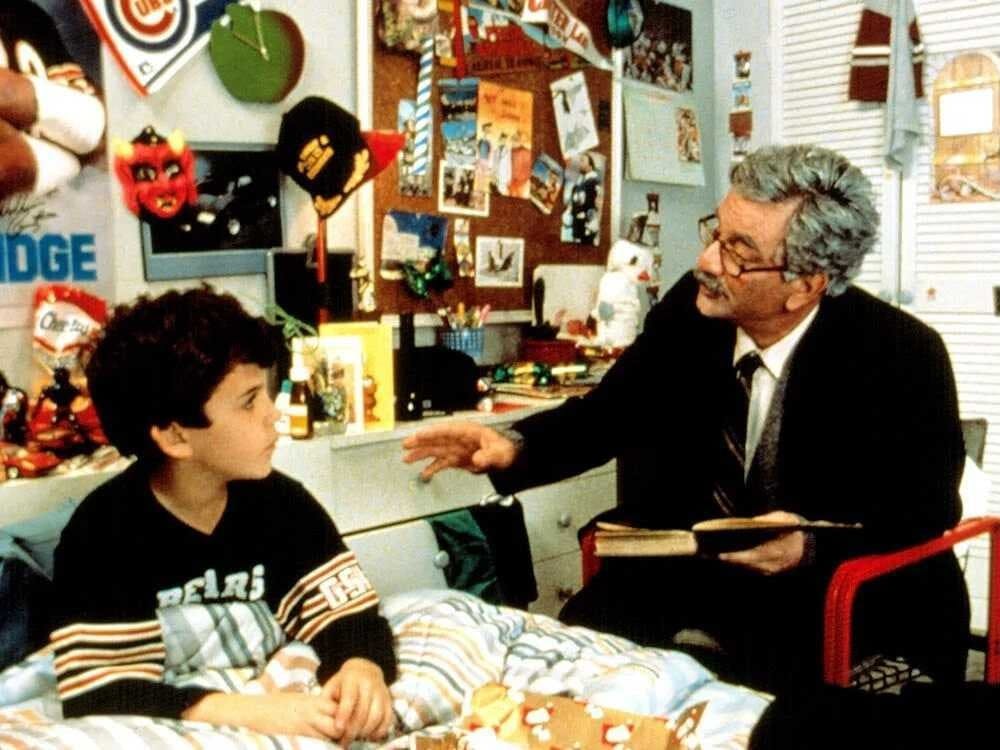What do epic romance, rodents of unusual size, sword fights, a big–hearted giant, evil pirate ships, and a six–fingered man have in common? They’re all crucial components of The Princess Bride, a 1987 romantic–comedy–fantasy–adventure that has a little bit of everything for everyone. It's the perfect film to ensure an escape from reality in this tumultuous time.
The tale of The Princess Bride, even in its genesis, was intended to transport both storyteller and listener to an alternate world. Author William Goldman came up with the idea for the original novel after asking his two daughters what they wanted to hear in a story. One asked for a tale about a princess and the other for a bride, and The Princess Bride was born from a classic parental compromise. Goldman told his daughters that that he was sharing an abridged version of a novel by the fictional S. Morgenstern.
15 years later, Director Rob Reiner utilized a similar framing device for the film by having a grandfather tell the story to his sick grandson.
When his grandson asks, “Has it got any sports in it?" the reply is:
“Are you kidding? Fencing, fighting, torture, revenge, giants, monsters, chases, escapes, true love, miracles!”
“Doesn’t sound too bad. I’ll try and stay awake.”
Spoiler alert: the grandson has no trouble staying awake, as what seemed like a boring old book is unexpectedly compelling. Not only is it suspenseful, swoon–worthy, and witty, it’s also a wonderful distraction from feeling under the weather. Hence why The Princess Bride is the ultimate comfort movie. What’s sweeter than having a loved one read you a fairytale while you’re snuggled up under the covers?
The story starts in the faraway kingdom of Florin, where a beautiful young woman named Buttercup falls in love with her farmhand, Westley. After he sets sail to find fortune, his ship is attacked by the Dread Pirate Roberts, and he is assumed dead. Years pass, and Buttercup is set to wed Prince Humperdinck. Before the wedding, she's kidnapped by three men, only to be pursued by the prince and a mysterious man in black, who is revealed to be (spoiler!) Westley.
As with most fairytales, there is a lesson to be learned from The Princess Bride: don’t judge a book by its cover. The story is a genre–bending, postmodern take on classic fairytale tropes. It sets up audience expectations only to pull the rug out from underneath the viewer. In a series of fairytale–esque hijinks, these wacky characters deal with their own interesting, surprisingly layered motivations. This prince is not–so–charming, there are logic puzzles that are both hilarious and deadly, and the classic fairytale monsters are ridiculous—not dragons or ogres, but giant rodents on fire.
Each character subverts their stereotypical character archetype. The endlessly quotable Inigo Montoya, a Spanish fencing master, is driven by revenge—but his goal comes from a place of love. His only desire is to avenge his father's death, and unlike many revenge–driven protagonists, he follows through and emerges better because of it. The character of Fezzik, played by the late Andre the Giant, stands seven feet tall. Though he is terrifyingly strong, he proves to be a loyal and caring friend.
Though Inigo and Fezzik begin as assistants to Buttercup's kidnapper, the dynamic duo ends up rescuing and reuniting her with Westley. However, Buttercup isn't your typical damsel in distress. She's the ultimate combination of stubborn, sassy, and selfless, unafraid to mouth off to her captors or her princely fiancé. She stops at nothing to protect her true love—a man equally as spunky and resourceful as she—instead of just waiting for her circumstances to change.
The comforting and believable romantic relationship between Westley and Buttercup is strengthened by witty dialogue, especially during otherwise serious situations—another characteristic missing from most classic fairytale adaptations.
One of the best scenes of the film occurs when Inigo and Fezzik bring an unconscious Westley to folk healer Miracle Max. Many viewers may remember Miracle Max's iconic line regarding Westley's state: “There's a big difference between mostly dead and all dead. Now, mostly dead is slightly alive.”
Later, when Buttercup believes she's married Humperdinck and attempts to stab herself in the heart, Westley stops her by commenting on her "perfect breasts"—a far cry from the Shakespearean nature of Buttercup's suicide attempt.
And then, of course, comes the most satisfying ending you can imagine. The couple, along with Inigo and Fezzik, flee the castle and ride off into the sunset—a storybook staple—and the grandson excitedly asks to hear the tale again tomorrow. Channeling Westley's iconic declaration of love and bringing the film full circle, Grandpa replies, "As you wish."







